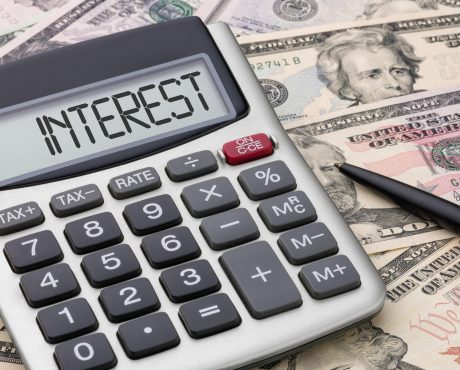Bond Market “X-Ray” Delivers Surprising Interest Rate Forecast
Anyone putting money to work today faces big questions: should they invest in short-term fixed-income products? Or should they lock their money into something longer-term?
Both options have trade-offs.
Short-term notes allow you to roll your money over quickly if interest rates rise, though they often come with lower up-front yields. Longer-term bonds offer better payouts, but can lock you into poor returns when rates increase.
It’s enough to make you pull your hair out. Depending on the size of your nest egg, the wrong decision could cost you thousands of dollars. Some investors spend hours agonizing over their choices.
One indicator, however, might provide an answer.
Back when I worked at a bond trading desk, we often checked an obscure corner of the market called “interest rate futures.” These products provide analysts with a probability estimate as to how likely the Federal Reserve will hike or cut the overnight funds rate.
The traders often described this indicator as the “bond market x-ray.” It provided the best way possible to predict what the Fed would do next. And for those on the desk trying to forecast interest rates, we had an inside edge.
So what do these interest rate futures say about the Fed’s next move?
Basically, traders have priced in no chance of another rate hike for the next year. In fact, they see a 23.3% chance of a rate cut at the beginning of 2020.
And they have good reason to be worried. Last week, the Department of Labor reported that the U.S. economy added only 20,000 jobs in February. Other indicators, such as consumer confidence, retail spending, and manufacturing production, have also failed to meet analysts’ expectations. (Source: “Just 20,000 jobs added in February as hiring slows, unemployment drops in latest report,” USA Today, March 8, 2019.)
Higher interest rates at this point could push the economy into a recession. That might force Federal Reserve Chair Jerome Powell to hold off on any more rate hikes, or to even begin cutting them.
|
Meeting |
Hike Probability |
Cut Probability |
| March 2019 |
0.8% |
0.0% |
|
June 2019 |
0.7% |
6.5% |
|
September 2019 |
0.7% |
10.3% |
|
December 2019 |
0.6% |
17.5% |
|
March 2020 |
0.6% |
23.3% |
(Source: “CME FedWatch Tool,” CME Group Inc, last accessed March 13, 2019.)
If futures traders get it right, the implications here could be big.
Savers should consider leaning toward longer-term investments, specifically products like notes or bonds.
These fixed-income securities generally come with bigger up-front yields. They also allow investors to lock in today’s high interest rates for a much longer period of time. That could pay off if the Fed cuts interest rates and new issues come out with lower yields.
Dividend stocks, furthermore, could also benefit. These equities have sold off in recent months as investors looked for higher returns in the bond market. But if rates drop, common shares will become more attractive.
More specifically, dividend-paying stocks of recession-proof businesses tend to do best of all. If the economy slows down or goes into a recession, cyclical and growth businesses will see their earnings dry up. But consumer staples like Clorox Co (NYSE:CLX), The Coca-Cola Co (NYSE:KO), and Procter & Gamble Co (NYSE:PG) often hold up just fine.
Of course, we can’t predict exactly where interest rates will go next. But the interest rate futures indicator has a remarkable track record. Futures traders have spotted turning points in the economy long before the general public takes notice.
And the latest interest rate forecast from the futures market is clear: yields are likely heading lower. Income investors should take notice.
